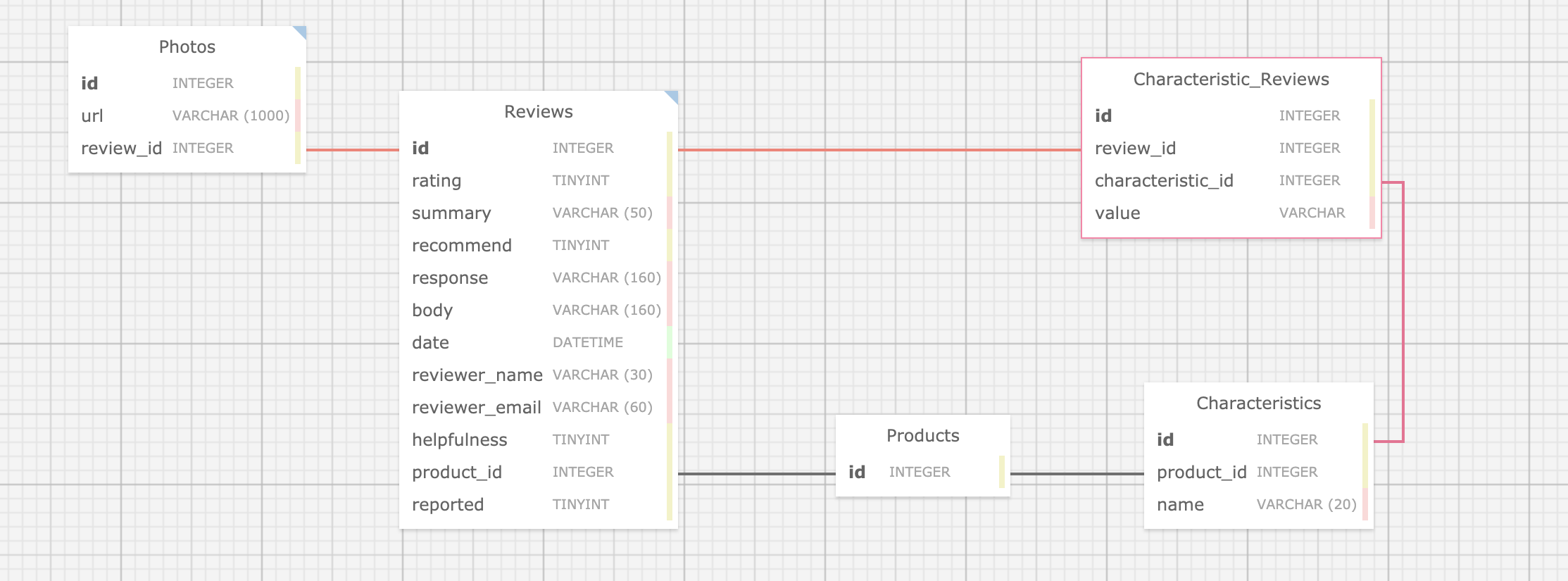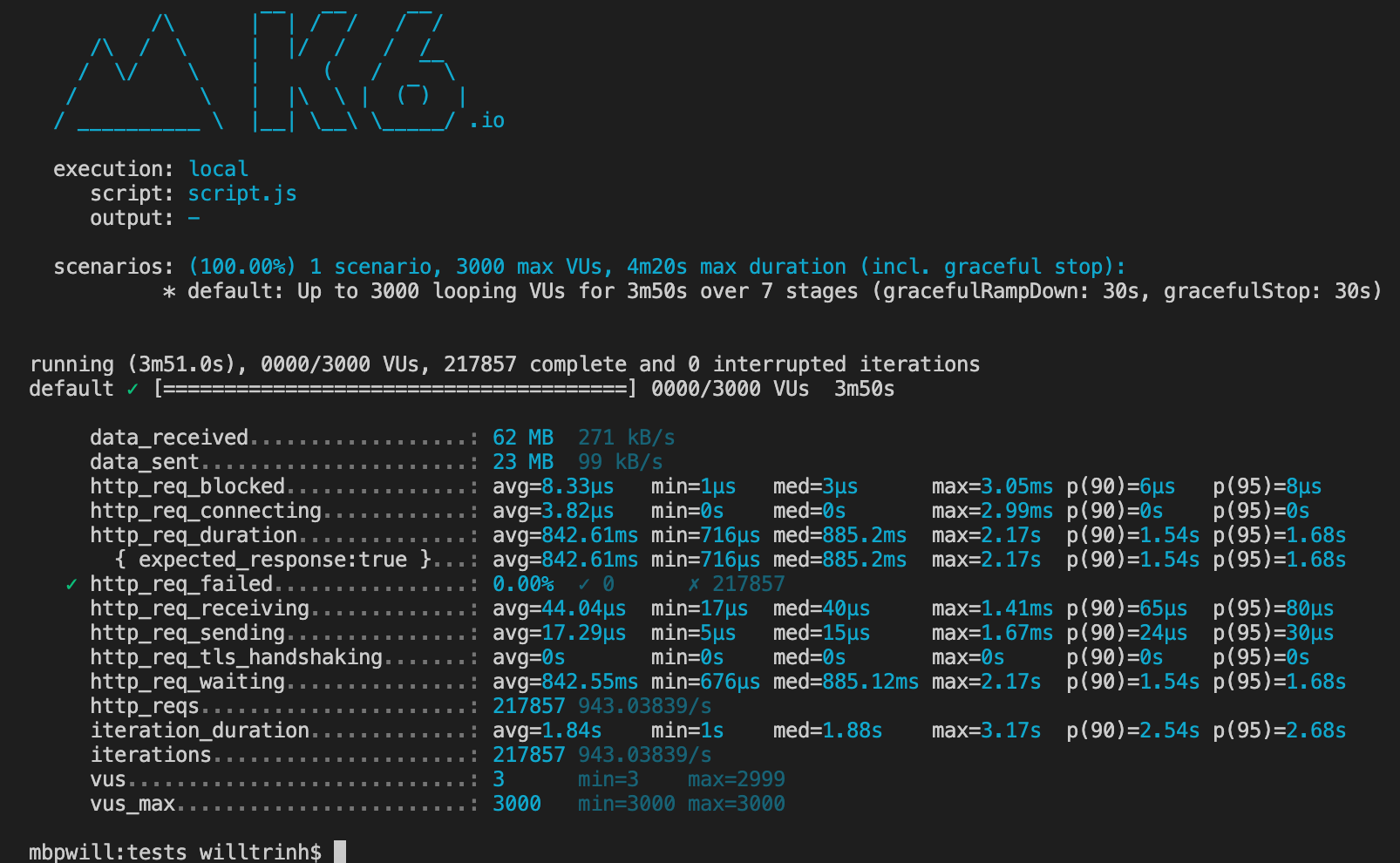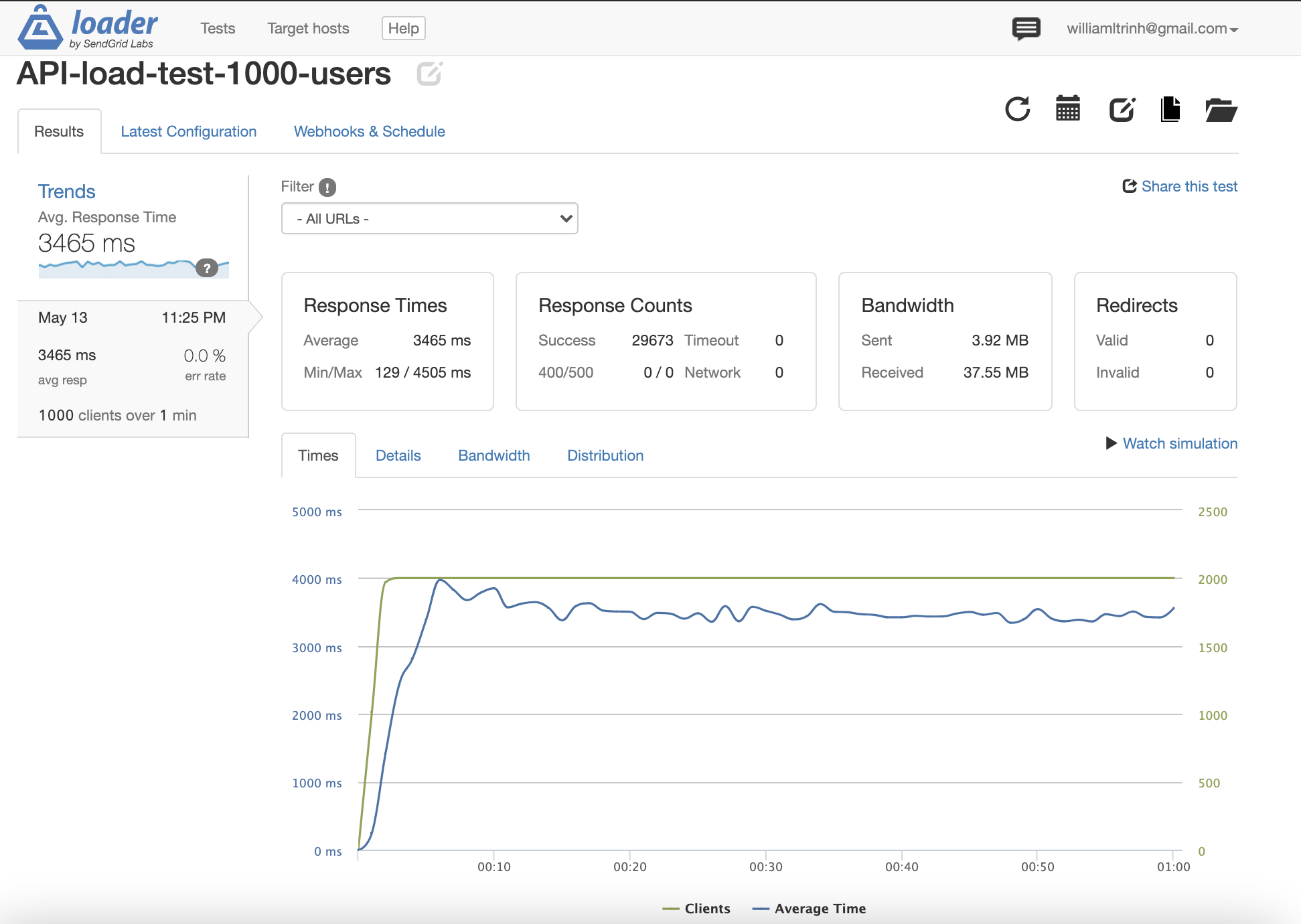Table of Contents
- Reviews API is the backend infrastructure designed and created from scratch for our client's ecommerce website with the primary goal of improving the website's performance to handle up to 10,000 requests per second and replace the currently outdated system that could not handle large amounts of user traffic to the website.
- Node.js
- Express
- MySQL
- Hosted on separated AWS EC2 instances
- k6.io (development evironment stress testing)
- loader.io (production/cloud environment stress testing)
- Integrated with NewRelic to analyze service's average response time, error rate, and throughput.
- Clone this repo or fork to your own repo
- cd into the directory on your local machine
- Install dependencies
npm install
- Start server
npm start
- You are connected to a remote MySQL database hosted on AWS EC2 instance and can test out the API endpoints (see API documentation)
localhost:3000/reviews?product_id=1
- Run tests
cd load-tests
k6 run script.js
- Designed and selected two DBMS technologies (RDBMS and NoSQL DBMS) taking performances and complexity into consideration. Designed a primary database (MySQL) and secondary database (Mongo).
- Performed Extract, Transform, Load (ETL) process to transfer a large application dataset into MySQL.
- ~1 million records of Products
- ~5.5 million records of Reviews
- ~18 million records of Product's Characteristics Metadata
- ~2.5 million records of Reviews Photos
- Designed and created API logic, defined routes expected by the API, integrated server and database.
- Performed DBMS and Service API stress testing with k6 integrated with New Relic in development environment (local machine).
- Deployed DBMS and API onto separate EC2 instances (t2.micro).
- Performed stress testing with loader.io integrated with New Relic in production environment.
- Scaled the application to handle loads up to 10,000 requests per second (RPS).
Response time (latency): <2000ms under load.Throughput: 1000 RPS on EC2.Error rate: <1% under load.
(for more details see engineering-journal)
- One of the early challenges that I faced was transforming the given data set to fit into MySQL database schema. Since MySQL does not have built-in
BOOLEANtype and instead allTRUEandFALSEvalue was converted into0and stored asTINYINT. I had to setTRUEandFALSEvalues to0and1before loading into the database.
-
I was able to achieve
1000 RPSon development environment (local machine) with5-10msaverage response time stress testing with k6. However, when deployed onto AWS EC2 and stress testing with loader.io, I noticed my average response time jumped to~3500msfor1000 RPS.
- Replaced MySQL createConnection with createPool since it allows for more queries to be executed at the same time whereas createConnection only has a single connection and would affect performance.
- To lower my average response time and increase performance, I decided to use
NGINXas a load balancer with the built-in Least Connection method and created 2 more servers on AWS in order to distribute the requests for evenly. With horizontal scaling, I was able to lower my response time from~3500msto~65msfor1000 RPS. - Horizontal scaling
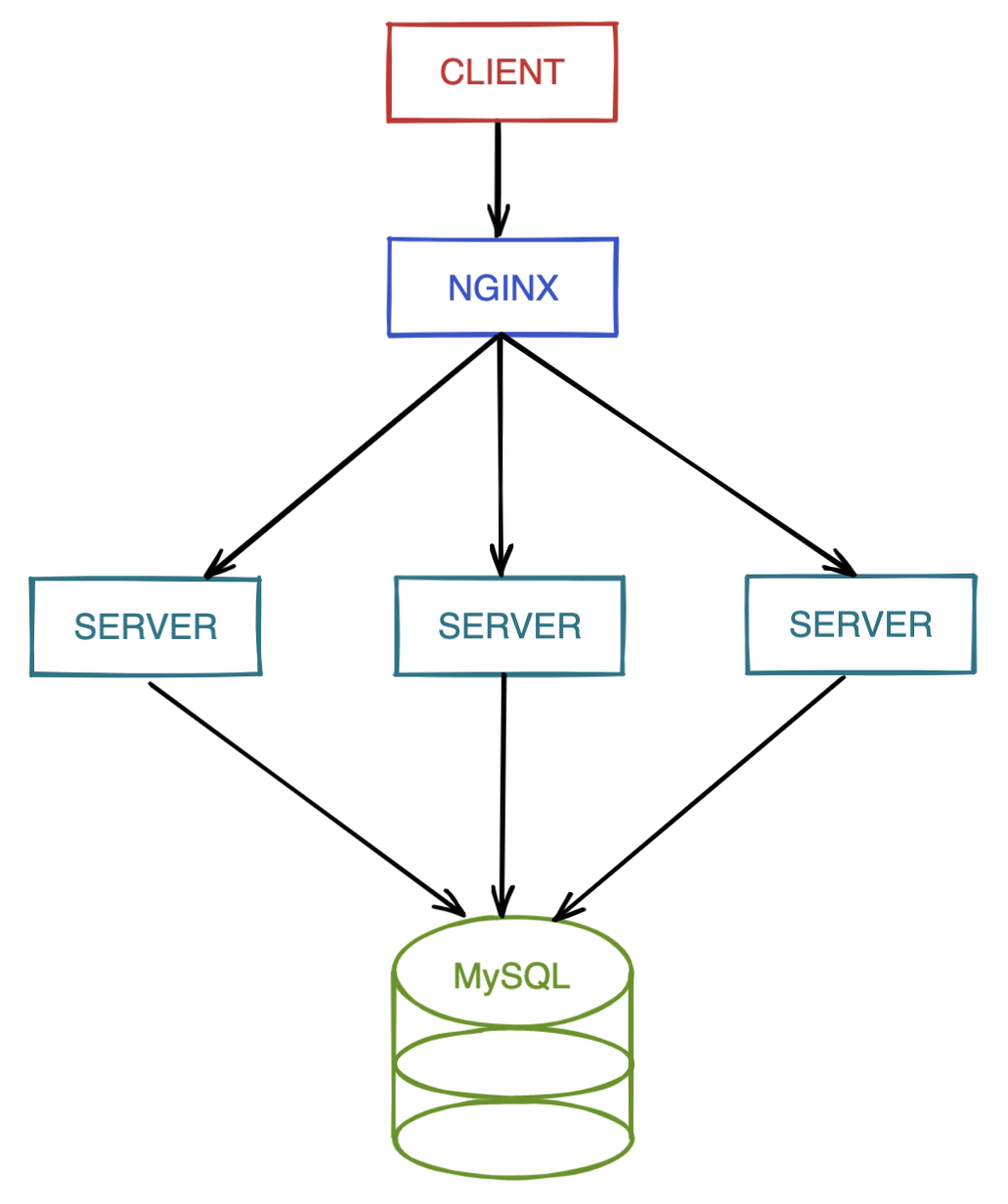
~3500ms->~500msfor1000 RPSand12% error ratewith 2 servers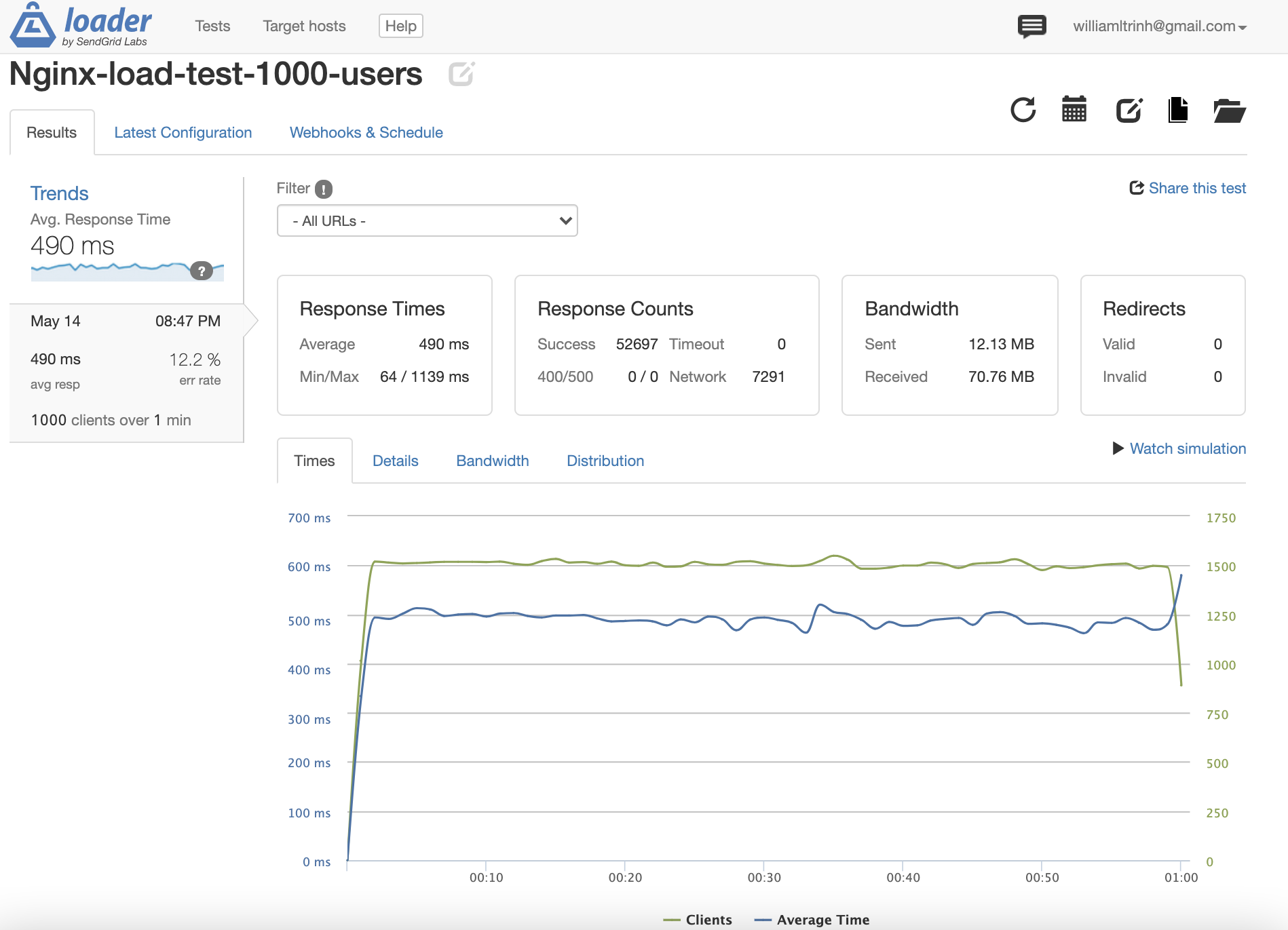
~500ms->~65msfor1000 RPSand0% error ratewith 3 servers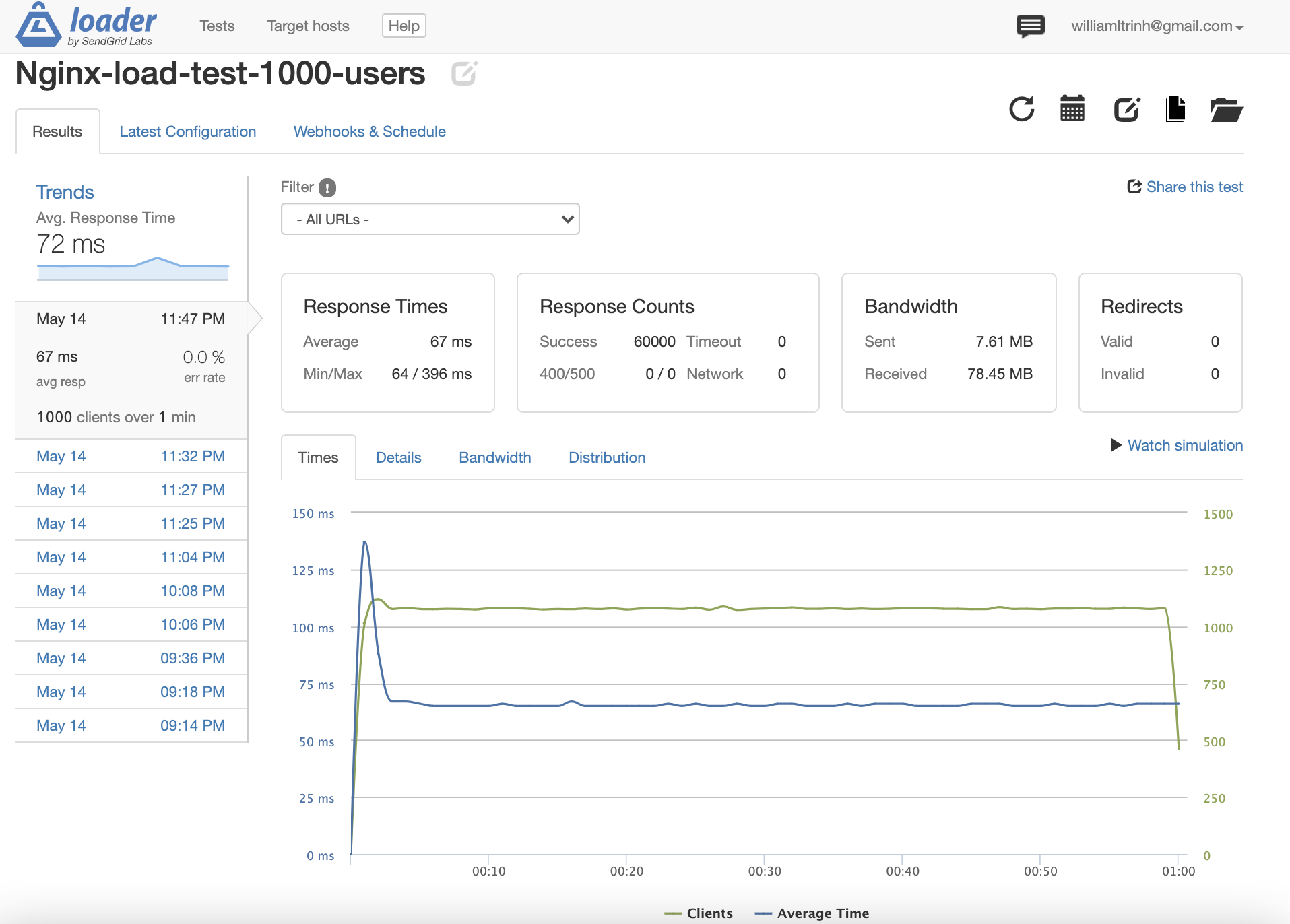
- After 3 servers, I noticed a diminishing returns in response time and concluded
~65msis the best I could get from horizontal scaling and that the next step would bevertical scalingwhich costs money.
Returns a list of reviews for a particular product. This list does not include any reported reviews.
- GET
/api/reviews
Query Parameters:
product_idSpecifies the product for which to retrieve reviews.countSpecifies how many results per page to return. Default 5.sortChanges the sort order of reviews to be based on "newest", "helpful", or "relevant"
Success Status Code: 200
Returns: JSON
{
"product": "2",
"page": 0,
"count": 5,
"results": [
{
"review_id": 5,
"rating": 3,
"summary": "I'm enjoying wearing these shades",
"recommend": false,
"response": null,
"body": "Comfortable and practical.",
"date": "2019-04-14T00:00:00.000Z",
"reviewer_name": "shortandsweeet",
"helpfulness": 5,
"photos": [
{
"id": 1,
"url": "urlplaceholder/review_5_photo_number_1.jpg"
},
{
"id": 2,
"url": "urlplaceholder/review_5_photo_number_2.jpg"
}
]
},
{
"review_id": 3,
"rating": 4,
"summary": "I am liking these glasses",
"recommend": false,
"response": "Glad you're enjoying the product!",
"body": "They are very dark. But that's good because I'm in very sunny spots",
"date": "2019-06-23T00:00:00.000Z",
"reviewer_name": "bigbrotherbenjamin",
"helpfulness": 5,
"photos": []
}
]
}- GET
/api/reviews/meta
Success Status Code: 200
Returns: JSON
{
"product_id": "2",
"ratings": {
2: 1,
3: 1,
4: 2,
},
"recommended": {
0: 5
},
"characteristics": {
"Size": {
"id": 14,
"value": "4.0000"
},
"Width": {
"id": 15,
"value": "3.5000"
},
"Comfort": {
"id": 16,
"value": "4.0000"
},
}- POST
/api/reviews
Body Parameters:
product_idRequired ID of the product to post the review forratingInteger (1-5) indicating the review ratingsummarySummary text of the reviewbodyContinued or full text of the reviewrecommendValue indicating if the reviewer recommends the productnameUsername for question askeremailEmail address for question askerphotosArray of text urls that link to images to be showncharacteristicsObject of keys representing characteristic_id and values representing the review value for that characteristic.
Success Status Code: 201
Request Body: Expects JSON with any of the following keys (include only keys to be updated)
{
"product_id": 123,
"rating": 5,
"summary": "String",
"body": "String",
"recommend": true,
"name": "String",
"email": "String",
"photos": [
{
"id": 1,
"url": "urlplaceholder/review_5_photo_number_1.jpg"
},
{
"id": 2,
"url": "urlplaceholder/review_5_photo_number_2.jpg"
}
]
}- PUT
/api/reviews/:review_id/helpful
Path Parameters:
review_idRequired ID of the review to update
Success Status Code: 204
- PUT
/api/reviews/:review_id/report
Path Parameters:
review_idRequired ID of the review to update
Success Status Code: 204
- Dockerize server for easier deployment.
- Implement Redis caching.
- Explore vertical scaling & other options.
